Documentaries Let People Look Back, Forward with Optimism
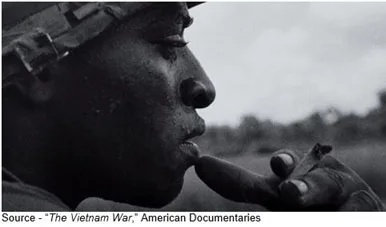
History was one of our favorite subjects in high school and college. Actually liked almost every subject except science.
We even had a passing thought of becoming a teacher until we found out how poorly they’re paid – even though they’re responsible for enlightening the next generation. So, go figure.
That’s probably why we prefer viewing documentary films and series rather than dramas, zombie/alien attacks, romcoms and … gawd forbid, reality stuff.
Oh sure, give us some good scifi content and we’ll sit there and become braindead for hours on end.
That’s why we enjoyed GoT, couldn’t wait to sign up for Disney + to watch Mandalorian and why we’re looking forward to (hoping for) the House of the Dragon prequel.
We also know we’re in a minority when it comes to seeking out good docs.

Fortunately, the M&E industry has a broad spectrum of creative people who are great at telling a compelling story.
And with OTT service providers almost desperate to fill their libraries and pipelines with film/series options for everyone on the planet, they’re scrounging the back lots around the globe.
We were reminded of the shake up at this year’s SMPTE conference when the “old guys” event unveiled its new Storyteller TED-talk style session plan and then sparked things up with a live 4K video feed with astronauts on the International Space Station.
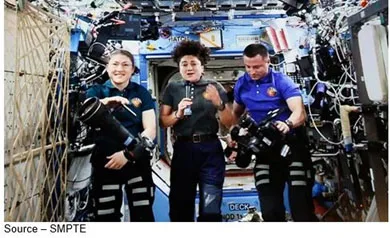
It was real-time proof that SMPTE standards have provided a platform that enables quality content anywhere … including in space.
It’s too bad most of the indie filmmakers around the globe didn’t get a chance to see it firsthand but it takes time for the SMPTE board and management to reach everyone even in our instant-on world.
It was interesting to see some of the footage that didn’t make it into the final cut from doc maker Todd Miller’s Apollo 11 film.
That and Ken Burns docs — Dust Bowl, Country Music, Unforgivable Blackness: The Rise and Fall of Jack Johnson and yes, The Vietnam War – reminded us why we find documentaries so interesting and entertaining.
They’re real, they need to be made and they need to be seen by people because the written word – books alone – doesn’t even come close to having as much impact as a solid documentary.
Fortunately, there are thousands of filmmakers who feel the same way and seem to be almost driven to bring these stories to screens despite the overwhelming time, money and creative investment to take on a project that will never be a tentpole film or garner a huge audience in theaters or on smaller screens.
It’s just a story they’re driven to develop, deliver.
We were reminded of the value and importance of documentaries during the SMPTE WIP (women in post) luncheon when writer, producer, director Pamela Green’s discussed her journey in making Be Natural: The Untold Story of Alice Guy-Blaché.

Green’s telling of Alice Guy-Blaché’s story was eight years in the making; and if you’re like us, you say, “O.K., who’s Alice Guy-Blaché?”
She immediately reassured us we weren’t ignorant for not recognizing her name and work.
She was the industry’s first female filmmaker who wrote, produced and directed thousands of silent and sound films and was then shut out of the industry she helped create.
During her 22-year career, she broke new ground first in France and later built, owned and ran her own studio in Fort Lee, NJ.
Her first film, La Fée aux Choux (The Cabbage Fairy), was one of the first narrative films ever made.

Green explained how, like most indie filmmakers and especially documentary producers, she spent a lot of time raising funds which were used to gather vintage footage from archives around the world as well as many of Alice Guy-Blaché’s restored films.
During her research, Green unearthed previously unknown letters, documents, photos, and vintage TV and radio interviews, which allowed Alice herself to tell her story.
Green noted, “The more I learned about her, the more she seemed like she couldn’t be real, like she was too good to be true. I was in awe of her and all her accomplishments.
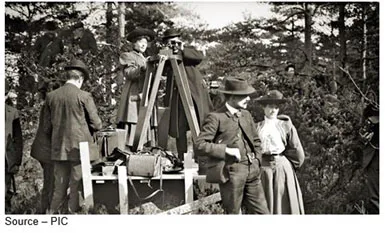
“I wanted to show young girls and boys that a woman was one of the first to move the film medium forward and pave the way for others,” she added. “For too long, the narrative about the origins of cinema – and other industries, for that matter – has overlooked important women and that needs to change.”
That was enough for us to put Be Natural on the short list of documentaries we’ve must view!
Another documentary that’s been added to our list is one that comes very close to reality TV – While Time Stands Still – by Elena Miliaresis.

The wife of an Iraq war vet, Miliaresis created the military family doc over 12 years to help people understand what it is like for families, especially spouses during wartime.
The film follows two military wives – Brandi Albritton and Denneny Cochran before, during, and after their husbands’ combat deployments.
The film has a solid foundation with more than one hundred interviews from Air Force, Army, Marine Corps, Navy, National Guard and Reserve families and experts.
Miliaresis’ work shows the other side of armed conflict and tracks the effect of war on spouses and parents over the course of six years.
While Time Stands Still is an unprecedented investigation that not only exposes the trauma inflicted on families, it also shows the grit and perseverance it takes to heal from these wounds of war.
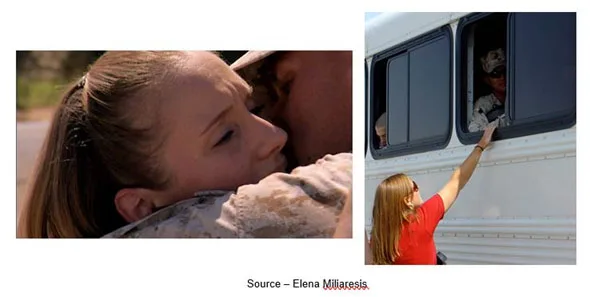
While bullets fly in the war zone, Miliaresis’ film focuses on the family challenges and issues that are seldom discussed or publicized.
After returning from the suicide crisis center during her husband’s third deployment, Brandi confessed, “I felt broken. I could barely get the baby her bottle. The boys were being loud, and I just wanted them to stop. I started thinking horrible thoughts that I don’t normally think of like hurting my children and hurting myself,”
While Time Stands Still isn’t all darkness. Miliaresis’ film also shows the power of the human spirit.
We guess one of the reasons we seek out and like documentaries is that there’s enough doom and gloom in the everyday world that folks need to see and appreciate goodness and the fact that there is light at the end of the tunnel.
While we in LA for the SMPTE conference, we were able to experience the documentary by Springbok Entertainment’s Steven-Charles Jaffe, Brandon Zamel and Andrew Cochrane.
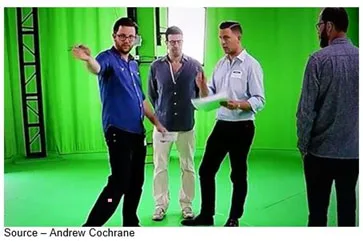
Cochrane, an immersive content creator who specializes in mediums such as virtual and augmented reality, was anxious for us to experience their most recent short subject, mini-doc – The 100% – and we thought it would be interesting to see if immersive media could really touch the viewer/participant as much as – or more – content you “know” isn’t really real.
You know, something you can take off the HMD, walk away and say, “Jeezz, that was fun.”
Developed in conjunction with the nationwide Stand Up To Cancer program, The 100% tells the story of Maggie Kurdirka, a young lady who wanted to be a ballerina from a very young age. It’s about her work to achieve her goal despite being diagnosed with stage four metastatic cancer.
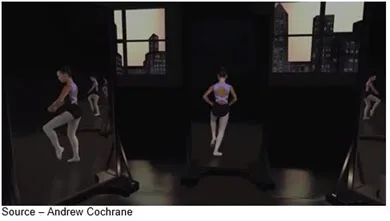
First, if you don’t know anyone up close and personal who has or had metastatic cancer, they are just words and the old saying is “words can’t hurt you.”
So how real, up close and personal can even a VR doc be?
Well, we spent twice as much time “in” the project than Andrew had planned because we wanted to see if we could understand what the disease meant to her, how she processed it, how she positioned it and perhaps most of all, how she moved forward.
That’s a lot of responsibility to put on the shoulders of a movie or show; but when you leave a good documentary, it should be with the fact that you got the filmmaker’s message.
We can only say … it worked for us!

Thanks to the significant demand from all of the new streaming services to add a broad mix of content topics to their libraries, documentaries are becoming slightly more viable because we believe (hope) people want to be exposed to and learn more rather than simply be entertained.
The challenge is that today’s indie filmmakers have to walk the fine line between telling the story they want to tell, to stay true to the message the subject wants to present and satisfy the tastes/influences of the people who will ultimately offer the project to the world.
Lighter, lower-cost cameras and production/editing equipment and systems are making it faster, easier and more economic for driven filmmakers to prepare and offer up their docs, so the variety and quality is certainly increasing.

In recent years, the US has had the highest demand per capita for biography titles, followed closely by Norway and New Zealand.
The three countries have about three times the global average demand per capita for the subgenre.
Of course, biographies aren’t the only docs creatives are driven to produce. They also include nature, science, travel, true crime, historical, social (rising very steadily today) and food.
How important, how popular?
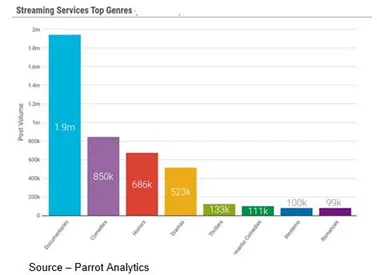
Yes, there’s a reason SMPTE is examining everything it’s doing and turning their activities inside out. The M&E industry is changing right before their eyes and you lead, follow or get out of the way.
The best filmmakers aren’t just starry-eyed kids who think they are destined to be the next Scorsese, Spielberg or Spike Lee; but men/women who understand their tools of the trade and know how to squeeze the most from them to deliver a creative message.
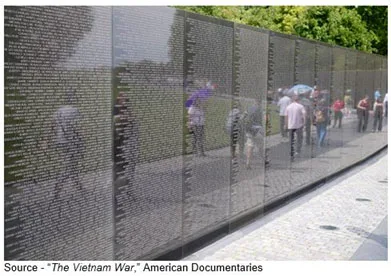 They know how to deliver a message that is as powerful as the closing shot of Burns’ Vietnam War.
They know how to deliver a message that is as powerful as the closing shot of Burns’ Vietnam War.
He explained it by saying, “Our scene of The Wall in our last episode is one of the most powerful scenes in the entire film. It is beyond effective. It’s one of the greatest works of art that I know.”
And that’s why we like docs!
# # #
Andy Marken – [email protected] – is an author of more than 600 articles on management, marketing, communications, industry trends in media & entertainment, consumer electronics, software and applications. An internationally recognized marketing/communications consultant with a broad range of technical and industry expertise, especially in storage; storage management and film/video production fields; he has an extended range of relationships with business, industry trade press, online media and industry analysts/consultants.